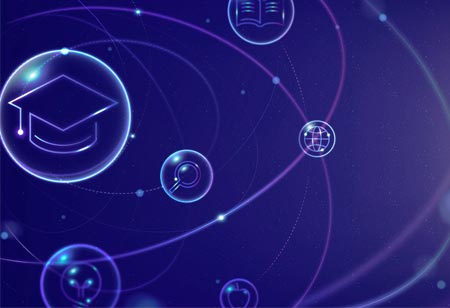THANK YOU FOR SUBSCRIBING
Be first to read the latest tech news, Industry Leader's Insights, and CIO interviews of medium and large enterprises exclusively from Education Technology Insights
The Top Trends In Education And Training Technology
The digital transformation in the education sector has increased enormously. Online and cloud-based delivery platforms

By
Education Technology Insights | Tuesday, August 09, 2022
Stay ahead of the industry with exclusive feature stories on the top companies, expert insights and the latest news delivered straight to your inbox. Subscribe today.
Technological advancements in education improve knowledge transfer between teachers and students and help in enhanced learning.
FREMONT, CA: The digital transformation in the education sector has increased enormously. Online and cloud-based delivery platforms are now the norm for all levels of education, higher education, professional development, and workplace training. In addition, the connection between adult learners and institutions offering higher education, such as colleges and universities, has undergone a significant transition due to the shifting demands of business and the workforce. Due to the speed at which technology is changing, it is essential to continually build new competencies to succeed in your career and your business.
Remote education
Many institutions and universities had to move to a remote learning paradigm due to the coronavirus outbreak. It was only an acceleration of a tendency already underway for a while, as with many other developments, in any case. E-learning is becoming a more common alternative for corporate training as well. Along with official education and training, many people increasingly take advantage of the chance to learn for fun or out of a passion for anything other than our day jobs.
Check Out This: Workplace Safety Services
VR and AR immersion technologies
More immersive and exciting learning opportunities are predicted to be produced by extended reality (XR), which includes virtual reality (VR), augmented reality (AR), and mixed reality (MR). It is crucial in a time when it's said that people's attention spans are decreasing, and we're getting used to consuming information in concise, attention-grabbing pieces. Other benefits of XR technologies include facilitating training in virtually identical situations without the danger of injury or costly equipment damage.
Automation and AI
The ongoing use of software powered by self-learning algorithms, capable of getting better and better at the task it is given, will have far-reaching effects. In addition to automating tedious tasks that educators must perform, like grading papers, it is used to offer more individualized educational opportunities or remote learning. Adaptive learning is a comparable notion, where the course changes as the students move through it to match their needs. Schools have even installed a system that scans pupils' faces using cameras outfitted with computer vision algorithms to determine whether they are paying attention in class.
Nano-learning
This trend is related to the dwindling attention spans and the constant competition for our time. When we need them, we can receive ultra-bite-sized lessons thanks to Nano-learning. It makes no difference if we forget what we've learned for more than 10 minutes because we can quickly re-learn it whenever we need to apply the information. It satisfies society's desire for fast, modular, and even addictive methods of imparting knowledge; Nano-learning will surely gain popularity in the coming years.







